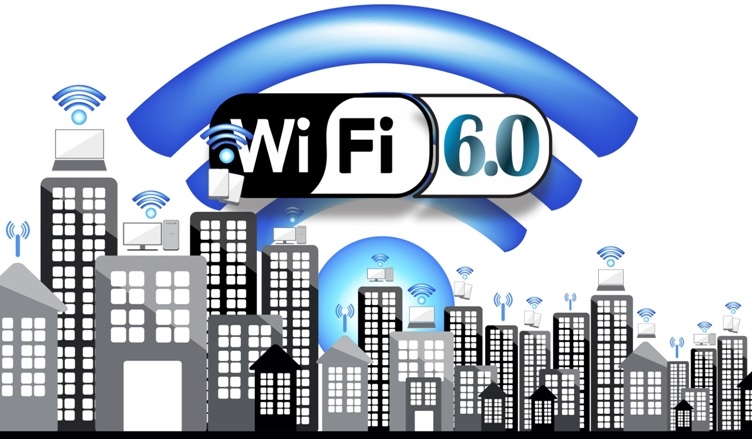What is WiFi 6 or WiFi AX? the new wireless connectivity

September 22, 2020
Nowadays WiFi is necessary, whether for teleworking or studio issues. Also, if you like home automation, you’re sure to have a smart speaker, whether it’s a Google Home or an Amazon Echo connected with infinity of products like light bulbs, switches or smart plugs among others. Not to say that there are many appliances that is increasingly connected such as washing machines or refrigerators.
The new WiFi 6 standard IEEE 802.11ax
Wireless connectivity was upgraded to the new IEEE 802.11ax standard in 2019, but it is still a technology that very few users have. Its advantages are obvious as we will now see, but it has not been until recently when, in addition to servers (routers), customers have also been laying with network cards that support this standard of communication.
WiFi 6 is an update that extends the bandwidth of a connection. Its enormous transmission capacity is demonstrated by supporting connections up to 8×8 i.e. 8 antennas transmitting at once. But the most common thing is to find router with these capabilities, which are able to deliver a speed of 4805 Mbps in the 5 GHz band, while WiFi 5 is only able to reach 2167 Mbps 4×4.
One of the main advantages is that WiFi 6 works on the two main bands, both at 5 GHz and 2.4 GHz. The latter frequency to date only operated over 802.11b/g at a discrete speed of 600 Mbps at a maximum of 3-3, while with WiFi 6 we would be reaching 1148 Mbps. The latency of the connection also decreases greatly, being ideal for playing without cable.
WiFi 6 and energy-saving mode
WiFi 6 serves users to better manage power consumption. The ‘Target Wake Time’ technology, which incorporates this new generation of WiFi, allows a device to be put into energy-saving mode until it needs to reconnect to receive new data. Instead of having the devices connect and turn off from time to time, there is a negotiation to set specific times in advance to access the communication channel and a reduction in power consumption is achieved. On the other hand, WiFi 6 will coexist with 5G. In fact, it is somewhat equivalent to what the 5G provides outdoors. But in this case its natural habitat is indoor coverage. Both technologies will complement each other. They will facilitate a massive deployment of the Internet of Things (IoT) and a greater commitment to virtual and augmented reality solutions.
A bit of a history of wireless technology
Many will wonder why WiFi 6, if at first when the idea was conceived, was called standard 802.11ax. Such names can seem very technological and sometimes tedious to remember, so when something goes by version six, it is expected that the previous versions exist. And they exist, although they are also not called by their versions, but by the standard designed for the moment.
In October 2018, the WiFi Alliance (the highest WiFi connection certification entity) announced that it would change the WiFi connection nomenclature. The next version, formerly known as WiFi 802.11ax would be renamed WiFi 6.
The entity has not officially named WiFi 1, WiFi 2 and WiFi 3 – perhaps because it is very old versions, although the WiFi standard has six main versions. It is therefore easy to deduce who is who, with the old and new nomenclature. Clarifying, these names are not official for the first three versions, only for versions 4, 5 and 6, the rest still retain the name of their standards.
- Wi-Fi 1, would be the 802.11a standard.
- Wi-Fi 2, would be the 802.11b standard.
- Wi-Fi 3, would be the standard 802.11g.
- Wi-Fi 4 is the previous 802.11n standard
- Wi-Fi 5 is the previous 802.11ac standard
- Wi-Fi 6 was formerly known as the 802.11ax standard.
It has new technologies
- ODFMA is Orthogonal Frequency-Division Multiple Access (ODFMA) allows multiple users to connect because the router divides frequencies
- MU-MIMO (Multi-User Multiple Input Multiple Output) It is multiple inputs and outputs for users, for better bidirectionality.
- Basic Service Set (BSS) Different colors are assigned to each network so that each network can be identified in a simpler way and be able to avoid interference.
- Increased security with the WPA3 standard that improves authentication and configuration.
- Improved energy efficiency, reducing the consumption of connected devices. TWT (Target Wake Time), technology, so we can save battery life on our devices like smartphones.
The most obvious benefits of WiFi 6
- Increased range and coverage. By the way you manage the different frequencies you are able to go further, without affecting the speed in data transmission.
- Multi-device management. With this technology it is possible to improve performance on all devices connected to the network. Through greater utilization of each stream, you can send more data to more devices in less time.
- Better speed, although not so remarkable. While 802.11ac (WiFi5) WiFi reaches 6.9 Gbps, 802.11ax (WiFi 6) will reach 9.6 Gbps.
- Supports previous protocols. The WiFi 6 router is capable of connecting to any device, even if it works under other protocols. Also, a gadget with WiFi 6 connection will be able to use other networks that are only WiFi 4 or WiFi 5, for example.
- Lower energy consumption. A large list of commonly used devices, such as laptops and tablets, will see their consumption reduced by your wireless network adapter. To do this, turn the communication on and off from time to time.
- Another enhanced feature is Base Service Station Color, known as BSS Color, which allows when there are many networks around where you are and you have WiFi 6, you may have less interference, because the devices will only connect to the network that propagates WiFi 6, regardless of whether your router is near the neighbor.
- Other advantage of WiFi 6 is security as it brings a new protocol called WPA3 (WiFi Protected Access version 3) that replaces WPA2. WPA3 encrypts the connection between the device and the access point to which it is connected.
In order to enjoy WiFi 6, you need to use a device that is certified as WiFi 6, as well as a router that supports this standard. Today there are already quite a few smartphones that support WiFi 6, such as the iPhone 11 series, Samsung Galaxy S10 / S20 / Note10, Xiaomi Mi 10 and more, as well as a good number of Wi-Fi 6 routers.








